 The complex problems presented by the bow of the 38' Northern Bay could all be solved with this hatch. Original plans called for some round Freeman hatches (one on either side of the windlass) However, once the hatches arrived they looked too industrial to be installed on the bow of a pleasure boat. Plan B was to make a stainless framed hatch that would hinge outward to allow access to the anchor rope/chain in the rope locker. Plan B was abandoned for Plan C when I saw this hatch in the Hamilton Marine catalogue and thought it might be a fix all. We wouldn't have to build the hatch and it creates the same amount of usable space as the custom hatch that we now don't have to make.
The complex problems presented by the bow of the 38' Northern Bay could all be solved with this hatch. Original plans called for some round Freeman hatches (one on either side of the windlass) However, once the hatches arrived they looked too industrial to be installed on the bow of a pleasure boat. Plan B was to make a stainless framed hatch that would hinge outward to allow access to the anchor rope/chain in the rope locker. Plan B was abandoned for Plan C when I saw this hatch in the Hamilton Marine catalogue and thought it might be a fix all. We wouldn't have to build the hatch and it creates the same amount of usable space as the custom hatch that we now don't have to make. Two stainless steel Southco latches will hold the hatch down, and we were so impressed with these latches that we are going to use the same style on all the deck hatches (just a little bigger). As you can see the round hatch won't sacrifice much area over the triangular hatch that we now don't have to build. The word perfect is overused and seldom warranted but its a rare thing to stumble upon a product that just fits perfectly with the theme of a boat. This could be the greatest hatch that I've ever seen. Have I done an adequate job selling the idea of installing this hatch vs. building the hatch that we no longer have to build?
Two stainless steel Southco latches will hold the hatch down, and we were so impressed with these latches that we are going to use the same style on all the deck hatches (just a little bigger). As you can see the round hatch won't sacrifice much area over the triangular hatch that we now don't have to build. The word perfect is overused and seldom warranted but its a rare thing to stumble upon a product that just fits perfectly with the theme of a boat. This could be the greatest hatch that I've ever seen. Have I done an adequate job selling the idea of installing this hatch vs. building the hatch that we no longer have to build? Running lights have been installed on either side of the fly bridge. Hella LED lights were used because they are
Running lights have been installed on either side of the fly bridge. Hella LED lights were used because they areengineered for safety, reliability and high performance
(according to their web site....that you can visit by clicking on the blue word Hella above) Lights were installed low to limit the amount of light washing into the wheelhouse while running the boat at night. Hella lights will also be used for the anchor light, deck lights, and stern light (not pictured) Hydraulic hoses have all been made and stationed (thesaurus claims that means the same thing as installed). To make the hoses measurements are taken and the hose is cut from the roll using a metal cutting chop saw. Ends are then pressed on using a hydraulic press that utilizes different sized dies to accommodate hose sizes from 1/4" to 1 1/4" inch. If we need larger hoses they need to made off site at Traction Heavy Duty Parts or Motion Industries.
Hydraulic hoses have all been made and stationed (thesaurus claims that means the same thing as installed). To make the hoses measurements are taken and the hose is cut from the roll using a metal cutting chop saw. Ends are then pressed on using a hydraulic press that utilizes different sized dies to accommodate hose sizes from 1/4" to 1 1/4" inch. If we need larger hoses they need to made off site at Traction Heavy Duty Parts or Motion Industries. These hydraulic hoses are 1/2" line and are run from the cylinder (large black part) through the auto pilot pump (silver and black motor). Hoses then travel through PVC pipe to the engine room where they are split into two sets of hoses (one to the lower helm and one to the upper helm). Hoses to the upper helm had to be extremely long (32 feet!!) because of the path they needed to take (through the starboard cabinet, up the arch leg, through the starboard upper bench, into the fly bridge forward area, and into the upper helm station). A smaller line connects the upper helm to the lower helm and the lower helm to the auto pilot pump to act as an oil equalizer. The upper helm has a vented fill cap to fill the system with oil and to allow for expansion as the oil warms. Expansion should be minimal because this is a manual system and very little oil is being moved (movement generates heat) where a power steering system would have a steering pump running constantly heating the oil to the point were it could overflow a tank or drool out a vented fill cap. Hydraulic oil expansion is equal to change in temp (in Fahrenheit) times volume of system (in cubic inches) time .0005. So for example if your 100 gallon hydraulic system (231 cubic inches times 100 gallons) heated up 35 degrees the oil would expand 404.5 cubic inches (1.75 gallons). Enough to make a large mess, this system will have less than 5 gallons of hydraulic oil and will never heat up enough to pose an expansion problem.
 My idea of where the windlass switch and trim tab switch should go on the lower helm station. An upper control for the trim tabs have to go on the fly bridge and the secondary control for the windlass (wireless control) is already installed and working. If this location is acceptable then holes can be cut and more loose ends (wires) can be tied up.
My idea of where the windlass switch and trim tab switch should go on the lower helm station. An upper control for the trim tabs have to go on the fly bridge and the secondary control for the windlass (wireless control) is already installed and working. If this location is acceptable then holes can be cut and more loose ends (wires) can be tied up.SHOP NEWS SHOP NEWS SHOP NEWS
Kendall gelled the forward section of the hull on Native Son.
John made the helm plates for the previously mentioned helms.
Jeff was painting then help running the hydraulic hoses.
Clay fit stainless steel rail on the spray rails on the 38' Northern Bay and the 32' Osmond Beal.
Dan Jr. was sick.
Dan Sr was injured on the job.
 I was making hydraulic hoses, ordering lights, taking pictures, and running wire. To be clear everyone did more than the one thing I listed for them, the SHOP NEWS section is more of a summery of the days events than a detailed list of everything that everyone did.
I was making hydraulic hoses, ordering lights, taking pictures, and running wire. To be clear everyone did more than the one thing I listed for them, the SHOP NEWS section is more of a summery of the days events than a detailed list of everything that everyone did.Content Explosion: 6 pics, 4 links, tons of useless info.

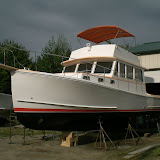

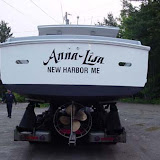

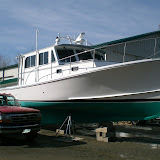
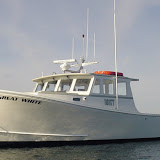
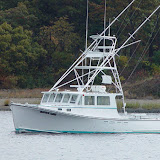

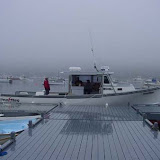

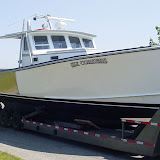
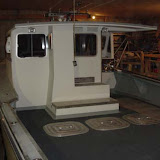
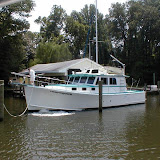

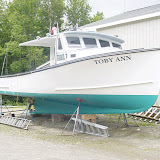


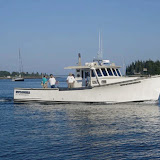
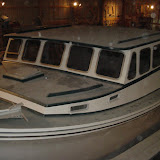
5 comments:
Glad to see that Osmond Beal got at least one mention :)
just because a boat isn't mentioned doesn't mean its any less important.
nice post about the use of hydraulic hoses
hydraulic hose manufacturers
nice post about the use of hydraulic hoses
hydraulic hose manufacturers
nice post Hydraulic hoses have become a popular product which supports the hydraulic applications.hydraulic hose manufacturers
Post a Comment